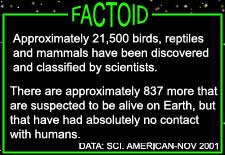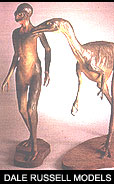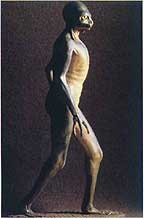FAQ'S
Here at the Reptoids Research
Center, many years have been spent searching for reptile based life
forms that are rumored to have evolved a high degree of intelligence and that are
mistakenly being called "Aliens" or "Extraterrestrials (E.T.'s)" by
their human neighbors. Collectively, these animal-beings are called Reptoids. Hence,
Reptoids.com.
"Aliens are
beings coming from Earth?" Yes, it's
looking to be a more reasonable answer than those offered by previous generations.
Consider this fact:  While scientists are proud of their cataloging approximately two and a half
million life forms, they reservedly estimate the total number of life forms to be
approximately between 100 million and 150 million! That means that our scientists
have only encountered about three percent of all the terrestrial life with
which we share this planet. While scientists are proud of their cataloging approximately two and a half
million life forms, they reservedly estimate the total number of life forms to be
approximately between 100 million and 150 million! That means that our scientists
have only encountered about three percent of all the terrestrial life with
which we share this planet.
Obviously, there's a lot of animal life out there yet to be
discovered, some of which might be too intelligent to have direct contact with humanity!
Furthermore, if unknown animal life such as Reptoids developed
intelligence before humanity, which may be the case, then it leaves little doubt as to who
or what may have been dominating our night and day time skies for hundreds if not
thousands of years.
What do Reptoids look like?
Reptoid physical forms appear to be as varied as those of humans
and even more so. They share certain physical attributes such as a humanoid form (one
head, two arms, two legs etc.) and some, but not all, of the following:
- Beaded or scaled skin like a lizard or serpent. The scales
(scutes) are larger on broad areas such as the back and chest and the hands, face and
other malleable areas of the body have small scales that allow finer flexing.
- A slightly large, slightly back sloping cranium (sometimes
appearing conical) with two bony ridges that begin near the brow region of the forehead
and extend backwards.
- Two slit or almond shaped eyes with either vertical or circular
pupils (Vertical indicates adaptation to low light environments, circular to near surface
or lighted environments.)
- Two ears (small holes,) one on each side of their heads that may
or may not be covered by thin scales.
- A flat and wide nose with a very little bridge area in
between.
- Lipless mouths with varying dentition.
- Very muscular and trim torso with strong arms and legs.
- Four to 6 digits of each hand covered by fine
scales.
- Tails that have been seen to be as long as four feet to as small
as 18 inches. Some do not have tails at all, only a small bump at the base of the
spine.
|
For a more detailed account of their physical
description with illustrations, click
here
Where do Reptoids live?
IN EARTH (and beyond)
in.....
Geologically Remote Areas
Scientists usually find new species of mammals and reptiles in geologically remote areas
such as forest canopies, cliff overhangs, caves, caverns, underground rivers, deep ocean
volcanic vents and sub glacial geothermal pockets.
Small, geologically remote ecosystems usually contain animal life
forms that are strangely unique. This is because the animals' ancestors had somehow been
separated from their larger parent species population (disasters etc.,) resulting in a
sharp reduction of genetic averages within the surviving group. When this happens, the
surviving groups evolution accelerates and morphological adaptations (formed to the
stresses of their surrounding environment) begin to occur in fewer generations.
Eventually, enough time passes, they become a distinct species of their own.
The more unique and stable the ecosystem and the more remote it
is, the greater the chance there is for finding new species of animals.
Eyewitness encounters also take place along the fringes of
society where tree lines meet rural communities and where there are densely thicketed
habitats such as swamps and isolated lakes.
Areas Favoring Specific Geological
Formations
Reptoids are suspected of living in geologically remote areas where Gravity Anomaly Maps
(inverse topographical maps) indicate the presence of empty underground
space. There appears to be a higher than normal percentage of reptoid sightings
in places containing ancient volcanic 'Tuffa' (soft volcanic ash beds,) limestone, karst
and sandstone (Missouri, Arkansas, Arizona, California etc.)
Since vertical separation is also a factor when considering
geological "remoteness," there stands a chance that some of surface humanities
concentrated populations may overlap deep subsurface cryptid (reptoid) populations (we may
have entire communities of old and young right under our very feet!)
Near Their Antarctic Origins
Antarctica or Polar Gondwana appears to be the location where the intelligent saurian root
may have evolved for reasons addressed at length on this
site.
Besides the paleontological evidence directing our attention to
Antarctica, many intriguing historical facts point towards the icy, mountainous continent
as a place of great mystery and unusual activities.
 _How ancient sea maps
show inland Antarctica, indicating early exploration during ice free conditions. Why
weren't these maps widely distributed throughout the mercator (mapmaking) world? What's
there? _How ancient sea maps
show inland Antarctica, indicating early exploration during ice free conditions. Why
weren't these maps widely distributed throughout the mercator (mapmaking) world? What's
there?
 _That in 1838 the U.S.
Congress funded a naval expedition that was to travel towards the north pole in an effort
to find a passage into the earth where they were instructed to established relations with
an Inner-Earth culture. (Antarctica was also suspected of having an entrance into the
Earth at the time.) _That in 1838 the U.S.
Congress funded a naval expedition that was to travel towards the north pole in an effort
to find a passage into the earth where they were instructed to established relations with
an Inner-Earth culture. (Antarctica was also suspected of having an entrance into the
Earth at the time.)
 That the Nazi
leaderships searched for their "Sky Gods" in Antarctica and the in areas near
the north pole (remember, Sweden is where numerous cigar-ship sightings occurred during
the war;) also interesting was the Nazi decision to have the post WWII leadership
relocated to Argentina, a nation of close proximity to Antarctica. That the Nazi
leaderships searched for their "Sky Gods" in Antarctica and the in areas near
the north pole (remember, Sweden is where numerous cigar-ship sightings occurred during
the war;) also interesting was the Nazi decision to have the post WWII leadership
relocated to Argentina, a nation of close proximity to Antarctica.
 How in 1947 admiral
Richard Byrd made several flights over Antarctica (operation "High Jump") and
afterwards said that he'd like to see "....that land beyond on the Pole. That area
beyond the pole is the center of a great unknown.' Since the pole
has always been considered the relative center point of uncharted
Antarctica, this strange, ambiguous statement about some other
central location has long been considered a cryptic message to the
mainstream public. (Many people believe that Byrd was making a
reference to the pre-existing rumor that there was either a naturally hollowed out
ice-cavern city somewhere in the interior of Antarctica or a circular entrance into the
hollow interior of Earth. This mysterious central core society is said
to be comprised of representatives from numerous Earth and ET
cultures). How in 1947 admiral
Richard Byrd made several flights over Antarctica (operation "High Jump") and
afterwards said that he'd like to see "....that land beyond on the Pole. That area
beyond the pole is the center of a great unknown.' Since the pole
has always been considered the relative center point of uncharted
Antarctica, this strange, ambiguous statement about some other
central location has long been considered a cryptic message to the
mainstream public. (Many people believe that Byrd was making a
reference to the pre-existing rumor that there was either a naturally hollowed out
ice-cavern city somewhere in the interior of Antarctica or a circular entrance into the
hollow interior of Earth. This mysterious central core society is said
to be comprised of representatives from numerous Earth and ET
cultures).
 That Antarctica is the
first land mass in history that all nations have agreed unanimously to keep completely
neutral and free of claimed ownership. (International cooperation is the rule and not the
exception in Antarctica.) That Antarctica is the
first land mass in history that all nations have agreed unanimously to keep completely
neutral and free of claimed ownership. (International cooperation is the rule and not the
exception in Antarctica.)
Obviously there's been a lot of mysteries surrounding Antarctica
and its over the years. If the Hollow Earth theory is ever found to be fact, then it is
entirely possible that intelligent beings such as Reptoids have been there investigating
it too.
Are Reptoids Related to Dinosaurs?
 Dale
Russell (Visiting Professor, Department of Marine, Earth and Atmospheric Sciences and
Senior Curator of Paleontology, North Carolina State Museum of Natural Sciences) once
published a professional "Thought Experiment" in which he projected what the
dinosaurs may have possibly evolved into if they had survived the, so called
"extinction event" that took place 65 million years ago. Using the known
morphology of the Troodon dinosaur, the image that he arrived at is identical to that
which has been recorded through history by the ancients (on rocks) and modern UFO
eyewitnesses and contactees. This is a startling revelation! Dale
Russell (Visiting Professor, Department of Marine, Earth and Atmospheric Sciences and
Senior Curator of Paleontology, North Carolina State Museum of Natural Sciences) once
published a professional "Thought Experiment" in which he projected what the
dinosaurs may have possibly evolved into if they had survived the, so called
"extinction event" that took place 65 million years ago. Using the known
morphology of the Troodon dinosaur, the image that he arrived at is identical to that
which has been recorded through history by the ancients (on rocks) and modern UFO
eyewitnesses and contactees. This is a startling revelation!
 We also know now that some of the dinosaurs did, in fact survive and their
descendants became avians or BIRDS! We also know now that some of the dinosaurs did, in fact survive and their
descendants became avians or BIRDS!
Birds are morphologically diversified bipedal, saurian
descendants (coelurosaurs) whose scales transformed into hair follicles over millions of
years, that learned to fly and to eventually demonstrate rudimentary intelligence by
mimicking other animals attempts to communicate. Other than mankind, what other animal has
come as close to reproducing human communication?
If one group of dinosaurs could have survived and evolved into
animals that attempt to reproduce human speech, then it stands to reason that another
group of dinosaurs may have also survived the extinction event 65 millions years ago and
also developed a certain degree of intelligence and learned unique communication skills.
The "Thought Experiment" that Dale Russell formulated,
demonstrating how the some of the dinosaurs were becoming more human-like, is a road
sign in evolutionary thinking. It shows us that our previously considered human form is
not as unique as we previously thought.
If the human form is a clear expression of a physical trend
shared with the dinosaurs, it's possible that that same genetic trend or course may have
extended itself into the brain and it's destiny towards intelligence. And, if
humans became intelligent somewhat recently in geologic time, we then we can only
imagine how intelligent the dinosaur's descendants might be now if they had millions of
year to get a 'head' start in developing their species. |




![]()